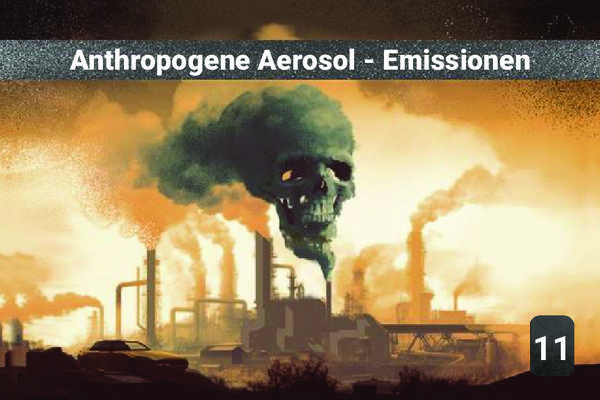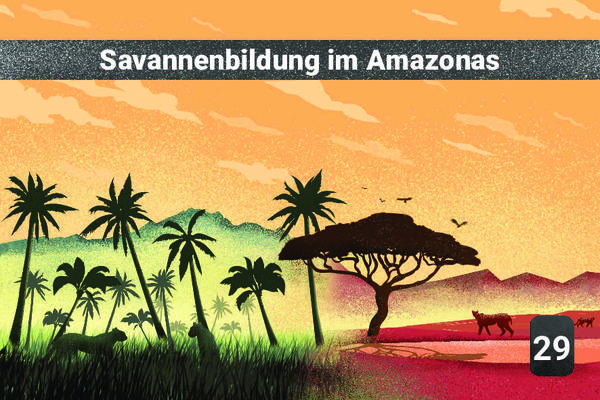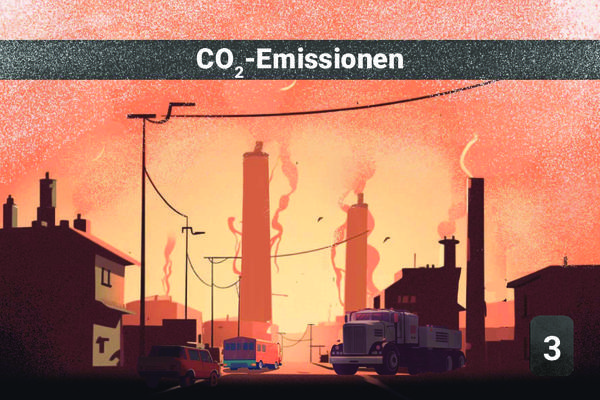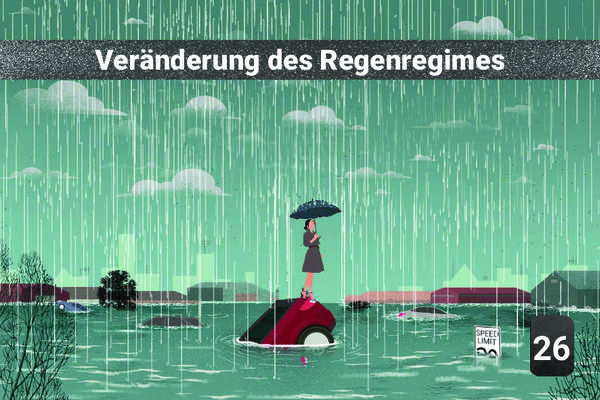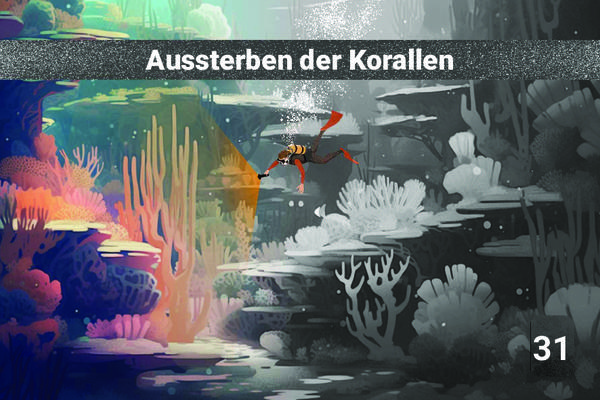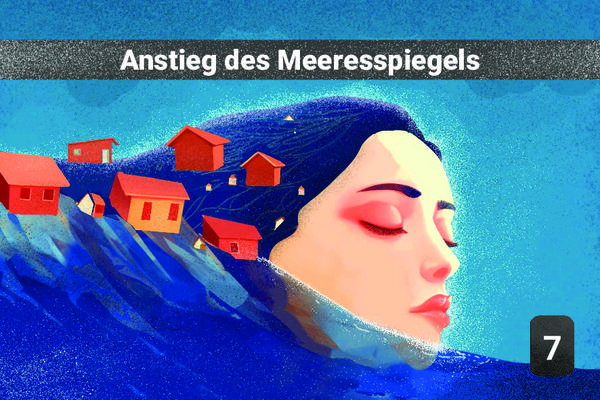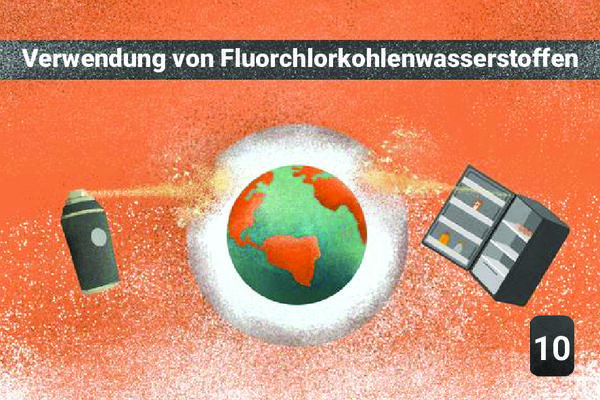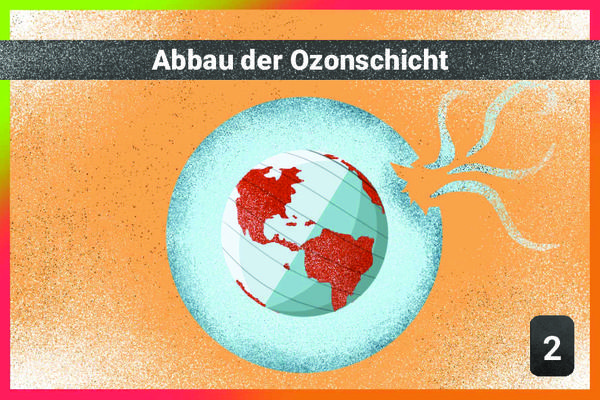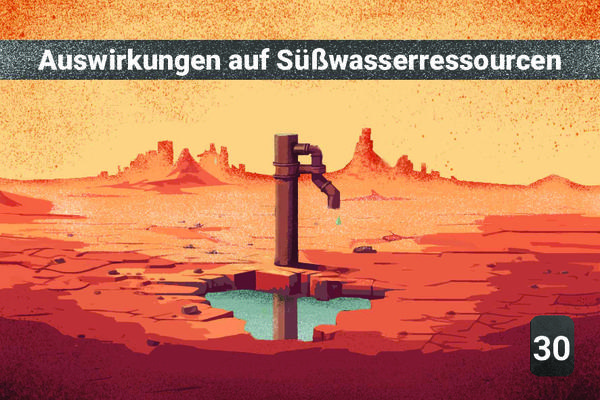1 - Klimawandel
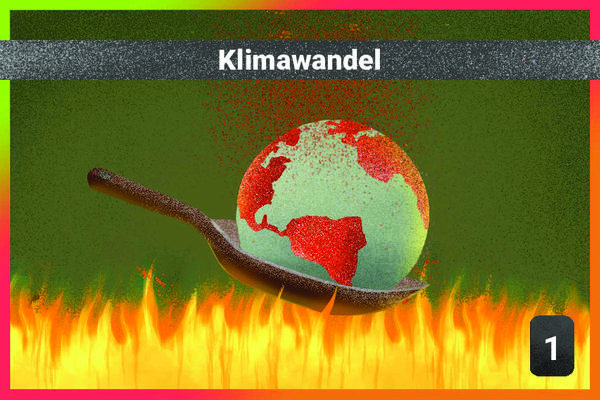
✏️ Diese Erklärung ist in deiner Sprache noch nicht verfügbar, Hier klicken um deine Übersetzung vorzuschlagen oder schreibe eine E-Mail an fdn.memo@marc-antoinea.fr.
Ein stabiles Klima während der letzten 10.000 Jahre sorgte für günstige Rahmenbedingungen für die Entwicklung der menschlichen Zivilisation. Im Jahr 2022 hat sich die Erde im Vergleich zum vorindustriellen Zeitalter um +1,15°C erwärmt. Dieser Prozess liegt im Bereich zwischen wachsendem und erheblichem Risiko. Das Phänomen ist im Zeitraum eines Menschenlebens nicht umkehrbar.
4Ursachen
Some aerosols have a cooling effect, and others a warming effect (depending on their composition, their altitudes, and even the seasons), but overall, the radiative forcing of aerosols is negative and therefore has a cooling effect. In fact, aerosols will (1) reflect the sun's rays directly and (2) contribute to the formation of clouds which will also reflect the sun's rays.
Methane (CH4) and nitrous oxide (N2O) are the main GHG greenhouse gases along with CO2 in terms of impact. They have a GWP (global warming potential) higher than CO2 (28 for methane and 265 for nitrous oxide, taking a 100-year reference), but are emitted in much lower quantities.
The savannahization of the Amazon would in turn accentuate global warming through the release of carbon contained in the vegetation into the atmosphere.
CO2 is the main greenhouse gas of anthropogenic origin. Part of it is absorbed into natural carbon sinks (oceans and vegetation via photosynthesis). The rest increases the concentration in the atmosphere and accentuates the natural greenhouse effect.
7Auswirkungen
With increasing air and water temperature, evaporation increases. At higher temperatures, the air can hold more water before precipitating (rain). The rainfall pattern is therefore affected by global warming. There is an increase in extreme rain events.
Climate change leads to melting of ice caps (= very large glaciers). The poles are the regions of the world where the impacts of climate change are most visible, temperatures are warming faster there and ice melting is accelerating. A tipping point leading to the complete disappearance of Greenland and West Antarctica is not established, but not impossible. We are not talking about glaciers here, even if they are also impacted by global warming.
The combination of deforestation, drier conditions and increased fires could push the rainforest ecosystem past a tipping point.
Coral is a symbiosis between colonies of polyps and photosynthetic algae, zooxanthellae, which give coral its beautiful color.
If the water temperature increases (due to climate change), the coral expels its micro-algae (the symbiosis is broken). Depigmented, it reveals its white skeleton.
If this continues, the coral dies, and filamentous algae covers its skeleton.
At +1.5°C, 70 to 90% of corals disappear At +2°C, more than 99% of corals disappear.
The amount of oxygen that can be dissolved in water depends on the temperature: the warmer it is, the less oxygen in the air dissolves in the water. Climate change therefore limits the dissolution of oxygen in water.
Climate change leads to an increase in the frequency and/or intensity of climatic hazards: heatwaves, cyclones, droughts, floods, etc.
2Andere möglichen Ursachen
CFCs (Chlorofluorocarbons) are GHGs, and therefore contribute to climate change. However, their overall impact is lower than that of CO2 / CH4 / N2O (although sometimes having a much higher GWP). Their replacements (HFC - Hydrofluorocarbon, which no longer contain Chlorine and are therefore no longer destructive of Ozone) are even more powerful GHGs than CFCs... This is why the Kigali Agreement in 2016 aims to reduce HFC emissions by 80-85% by 2036 to 2047 depending on the country. HFCs will gradually be replaced by hydrofluoroolefins (HFOs) with no impact on the ozone layer and much more limited greenhouse effects.
The ozone layer -> climate change link can be true or false depending on the justification given. The ozone layer filters part of UV rays, therefore helping to limit the energy reaching the earth's surface. However, this impact is not significant. This link is therefore true, even if secondary. It is likely that most of the participants making this link do so with a poor justification in mind (confusion of the ozone layer and climate change phenomena). It is therefore important to check what they have in mind with this link. During pollution peaks, ozone is produced at low altitude, which is a greenhouse gas and heats up locally. On the other hand, this ozone being produced at low altitude, it is not part of the "ozone layer", and therefore does not justify an ozone layer -> climate change link.
1Andere mögliche Auswirkung
1Üngültige Auswirkung
It is not global warming that is causing ocean acidification. These two phenomena (climate change and ocean acidification) have the same cause: CO2 emissions. Part of CO2 emissions (around half) remains in the atmosphere, which increases the greenhouse effect and warms the climate (climate change). Part of CO2 emissions (around 1/4) is absorbed by the oceans. The dissolution of CO2 in the ocean acidifies it. The rest of CO2 emissions (around 1/4) are absorbed by vegetation via photosythesis.

